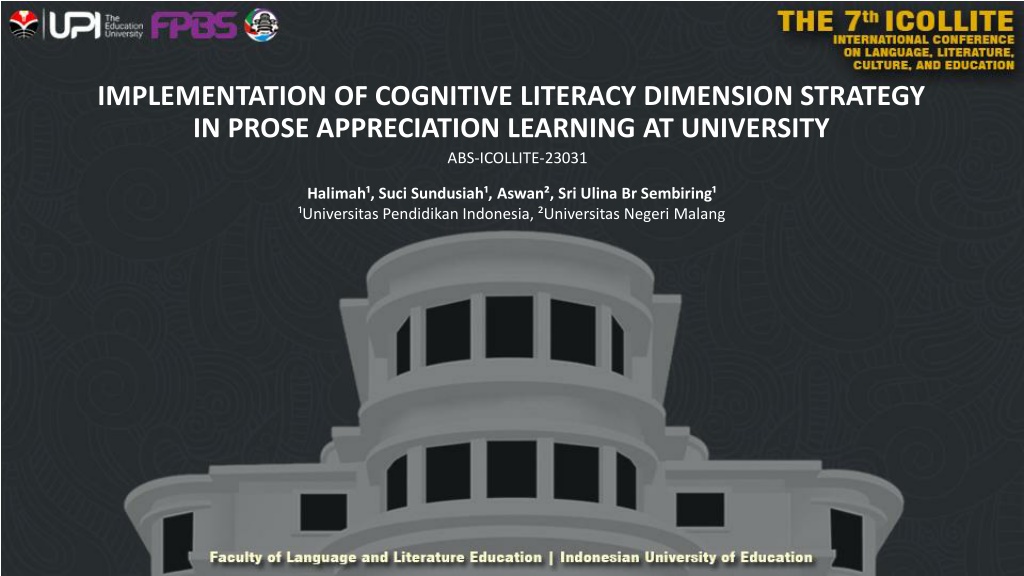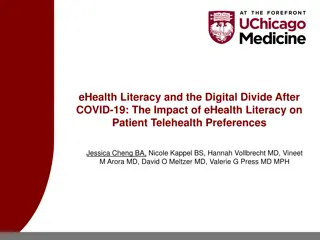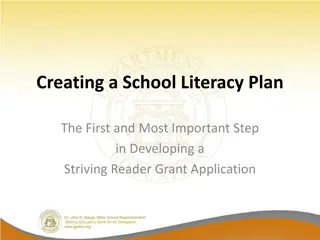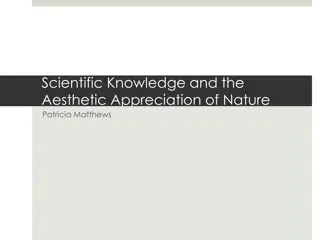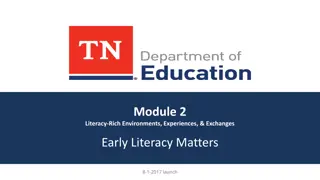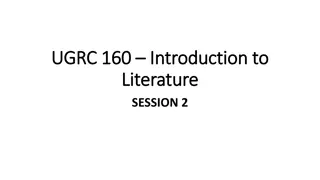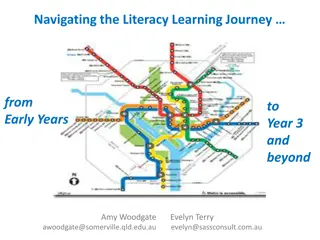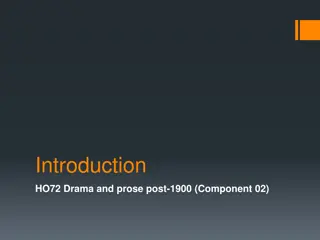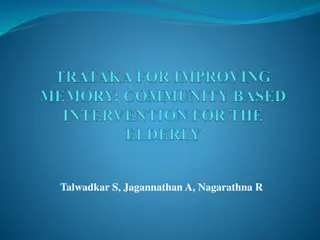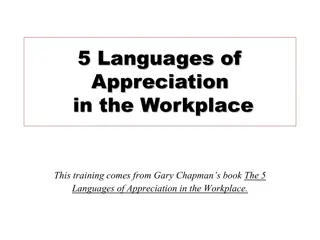Implementation of Cognitive Literacy in Prose Appreciation Learning
The study focuses on the implementation of cognitive literacy dimension strategy in prose appreciation learning at universities. It discusses the impact of technological advances on society and the importance of incorporating moral values in education. The research findings indicate that the cognitive literacy dimension learning strategy improves short story appreciation compared to traditional methods.
Download Presentation

Please find below an Image/Link to download the presentation.
The content on the website is provided AS IS for your information and personal use only. It may not be sold, licensed, or shared on other websites without obtaining consent from the author. Download presentation by click this link. If you encounter any issues during the download, it is possible that the publisher has removed the file from their server.
E N D
Presentation Transcript
IMPLEMENTATION OF COGNITIVE LITERACY DIMENSION STRATEGY IN PROSE APPRECIATION LEARNING AT UNIVERSITY ABS-ICOLLITE-23031 Halimah , Suci Sundusiah , Aswan , Sri Ulina Br Sembiring Universitas Pendidikan Indonesia, Universitas Negeri Malang
INTRODUCTION It is undeniable, the progress of the times marked by technological advances brings positive and negative impacts. Ngafifi (2014, p. 42-43) stated even though technological advances gives many various benefits for humans, however, this technological advance will give a negative impact to social culture: a. moral decline among community members; b. delinquency and deviance among teenagers have increased; c. changes in interaction patterns among humans. According to that phenomenon, it is important to provide an implementation of moral values in society, especially in education society. Halimah, et al (2020) stated that literary appreciation is suitable as a moral teaching tool, especially in the short story genre.
LITERATURE REVIEW Literary Appreciation Process (activity) of beautifying, enjoying, inspiring, and apprehending literary works individually. (Saryono, 2009; Aminuddin, 2011) The Dimensions of Cognitive Literacy Related to readers or writers ability in interpreting text and writing. (Kucer & Cecilia, 2006, etc) Fiction Prose Appreciation Learning
METHOD True Experimental Design Design of the randomized pre-test and post-test control group (RPPCGD
FINDING AND DISCUSSION Description Table of Pre-test & Post-test of Students in Appreciating Short Story in the Indonesian Fiction Prose Appreciation Course Pre Test Std. Deviation Post Test Std. Deviation Std. Error N Mean Std. Error 95% Confidence Interval Min Max N Mean 95% Confidence Interval for Mean Lower Bound Min Max for Mean Upper Bound Lower Bound Upper Bound 65.7713 65 64.8231 3.826 .4746 63.8749 59.00 74.50 65 90.66 2.826 .350 89.9690 91.3695 85.00 95.50 Experimental Class Experimental Class 65 68.7692 3.824 .4743 67.8216 69.7169 60.50 76.00 65 87.76 2.980 .369 87.0307 88.5078 83.00 95.50 Control Class Control Class 130 89.21 3.238 .284 88.6572 89.7812 83.00 95.50 Total 130 66.7962 4.294 .3766 66.0509 67.5414 59.00 76.00 Total The average score of the control class is higher than the experimental class. The average ability of the experimental class is higher han the control class.
CONCLUSION The improvement of short story appreciation in the Indonesian fiction prose appreciation course that used cognitive literacy dimension learning strategy (experimental class) is higher than the other class (control class) that used expository learning strategy.
REFERENCES Abrams, M.H. (2009). A Glossary of Literary Terms, Ninth Edition. Boston: USA Wadsworth Cengage Learning. [Online]. Diakses dari file:///D:/E%20Book /Abrams.pdf. Aminuddin. (2011). Pengantar Apresiasi Karya Sastra. Bandung: Sinar baru Algensindo. Halimah, Sumiyadi, Mulyati, Y., Damaianti, V. S. (2020). Critical literacy approach in the teaching of literary appreciation using Indonesian short stories. Indonesian Journal of Applied Linguistics, 10(1). 84-94. https://doi.org/10.17509/ijal.v10i1.24992 Knaflic, L. (2014). Psychological Aspects of Literacy. Libellarium, VII, (1), 41-53. [Online]. Diakses dari https://hrcak.srce.hr/file/202150. Kucer, S.B. dan Cecilia, S. (2006). Teaching the dimensions of literacy. London: Lawrence Erlbaum Associates, Publishers. Kucer, S.B. (2014). Dimensions of Literacy and Writing in School Settings. New York dan London: Routledge Taylor & Francis Group. [Online]. Diakses dari file:///D:/E%20Book/Kucer-Dimensions %20of%20Literacy_%20(2014).pdf. Kuswana, W. S. (2012). Taksonomi Kognitif: Perkembangan Ragam Berpikir. Bandung. PT Remaja Rosdakarya. Moore, M. (2009). Dimensions of Literacy: Sociocultural. University of New England: Courtney Graffius. [Online]. Diakses dari https://luv2teach.weebly.com/uploads /3/9/6/4/3964527/dimensions_of_literacy._sociocultural.pdf. Ngafifi, M (2014). Kemajuan Teknologi dan Pola Hidup Manusia dalam Perspektif Sosial Budaya. Jurnal Pembangunan Pendidikan: Fondasi dan Aplikasi Volume 2, Nomor 1, 2014. Diunduh dari: https://journal.uny.ac.id/index.php/jppfa/article/download/217 Petersson, et al. (2009). Language and Literacy from a Cognitive Neuroscience Perspective. Dalam Olson dan Torrance (Penyunting ), The Cambridge Handbook of Literacy (hlm. 153-182). New York: Cambridge University Press. [Online]. Diakses dari https://escholarship.org/uc/item/4fp2h2zp. Saryono, D. (2009). Dasar Apresiasi Sastra. Yogyakarta: Elmatera Publishing. Siregar, Syofian. (2014). Statistik parametrik untuk penelitian kuantitatif. Jakarta: Bumi Aksara. Sugiyono. (2011). Metode Penelitian Pendidikan:Pendekatan Kuantitatif, Kualitatif, dan R&D. Bandung: Alfabeta.
